The Ryadkov family (or Tricholoma) has up to 2500 species of fungi, among which the greenfinch or Tricholoma equestre is very well known. It is characterized by a specific greenish color, for which he received such a Russian name.
The people call this species in different ways, for example, green, golden or lemon, jaundice, green, green and other mushrooms. The mushroom is eaten, but only with proper mechanical, physical and thermal processing, otherwise it can cause intoxication of the body .
Content
Basic information about greenfinch
Zelenukha looks like a pale green mushroom with a hat diameter of 5 to 13 cm. An interesting fact is that the color of the golden row of hair does not change even during processing and before serving.
Appearance and photo
The fungus is characterized by a low, downwardly thickened pedicle, which is almost completely immersed in the soil. Has a yellowish or golden color, which is always lighter than the outer surface of the cap.
Hat with a diameter of 12-13 cm olive, green-yellow color, fleshy. With the growth and development of the golden row, the outer surface of her hat darkens, and in old mushrooms it becomes dark green. On the inside, the color of the cap is identical to the color of the leg; there are also many thin, oblong plates.
On the cut, the brilliant green also has a greenish color, the pulp is dense. There are small flakes on the surface, which is why particles of other plants, earth, stick to the green, especially in rainy weather. Zelenushka has a mild flour aroma.
Understanding the description of how much greenfinch differs from other mushrooms is difficult, therefore we give a photo of a similar one with it - seruga. Inexperienced mushroom pickers can confuse them, because except for the color, they almost do not differ, but they are completely different mushrooms, since the serum is from the Syroezhkov family, while the greens are from the Ryadkov family.
Morphology
According to its morphology, greenfinch differs from other species in its specific color, low leg (4-6 cm in length and up to 2 cm in thickness), which is most often thickened to the bottom, with frequent and small plates (6-11 mm thick), corresponding to the color of the leg . The hat is not uniform: on the periphery it is light yellow-green, and closer to the center it is darker, olive, and mustard. Unlike other species, it does not have an unpleasant, pungent odor.
According to morphological characteristics, edible grayish is most similar to greenfinch. The only difference is the color; in the row of gray it is mouse, dark gray, sometimes with a greenish tint.
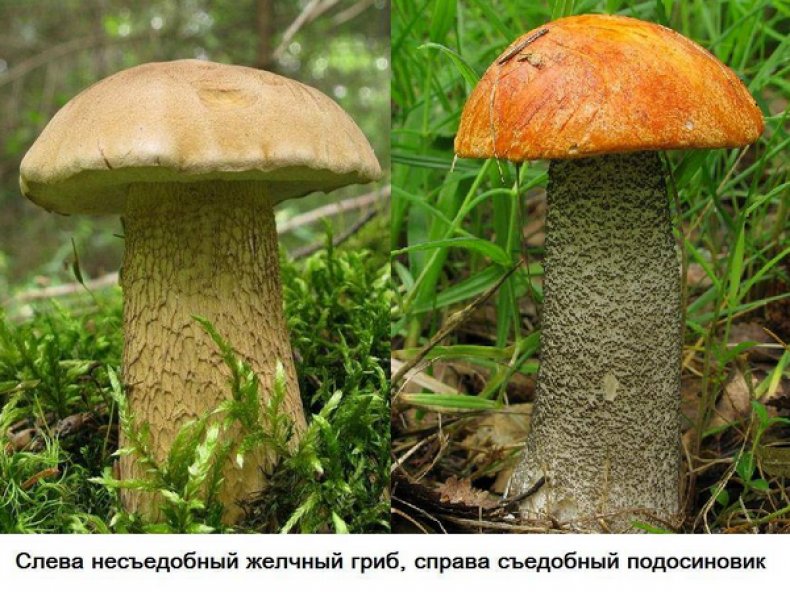 You may be interested in:
You may be interested in:Habitat
The usual place for the distribution of greenfinchs is pine forests (often dry) growing on sandy ground. They also occur on light loamy and sandy loam soils when the remaining edible mushrooms have already “left”, just before the onset of cold. Perhaps that is why green rowans are almost never wormy.
Eating
Zelenushka is a food product with a dubious reputation: on the one hand, it is believed that it is very tasty and suitable for consumption, and on the other, that this mushroom is dangerous and its use can lead to unpredictable consequences.
Until 2001, the mushroom was considered conditionally edible, but later cases of poisoning began to appear due to its excessive consumption. There are even 3 deaths recorded in France. It is believed that toxins affect skeletal and smooth muscles, destroying them, and also cause rhabdomyolysis, in severe cases leading to renal failure.
Time and collection rules
“Silent hunting” for greenfinchs is not easy, since almost their entire leg is hidden in the ground, and the hats merge with the ground and are often under needles. It is preferable to collect greenfinches at the end of autumn, immediately before the onset of frost. Usually this is mid-October - early November. This species grows in open areas where there is a lot of light, near young conifers, often pine trees, alone or in groups of up to 8 pieces.
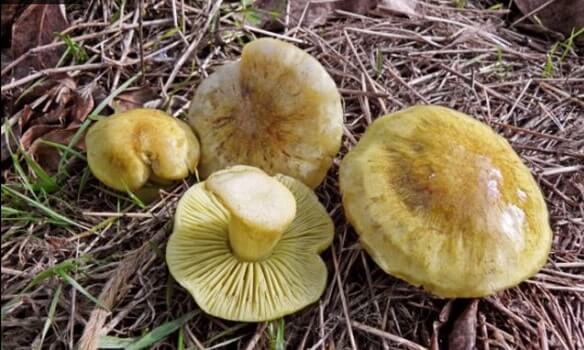
Since the mushroom tends to “collect” on itself surrounding garbage, including sand, the leg should be cut carefully, in an upright position, above the soil level. Before you put the cut mushroom in the basket, you need to clean the hat: scraping movements with a knife or brush over it. When the jaundice is cleaned and there is no sand between the plates, it can be put in the basket.
How to distinguish greenfinch from false, inedible mushrooms?
In appearance, greenfin is similar to several other species of this family. For example, with a row of sulfuric - a poisonous mushroom that causes easily occurring gastrointestinal upsets. Therefore, it is important to be able to distinguish between edible and poisonous species.
Mushrooms have a similar color (yellow-green, yellowish) and the diameter of the cap. In order not to confuse them and not jeopardize themselves, one should know the specific differences: sulfur rowing always has a rich, unpleasant odor, reminiscent of the smell of tar, hydrogen sulfide. She has few records, they are always attached to the stem, which reaches up to 11 cm in height. As they age, the mice, as they also call the gray row, acquire a rusty or brown color.
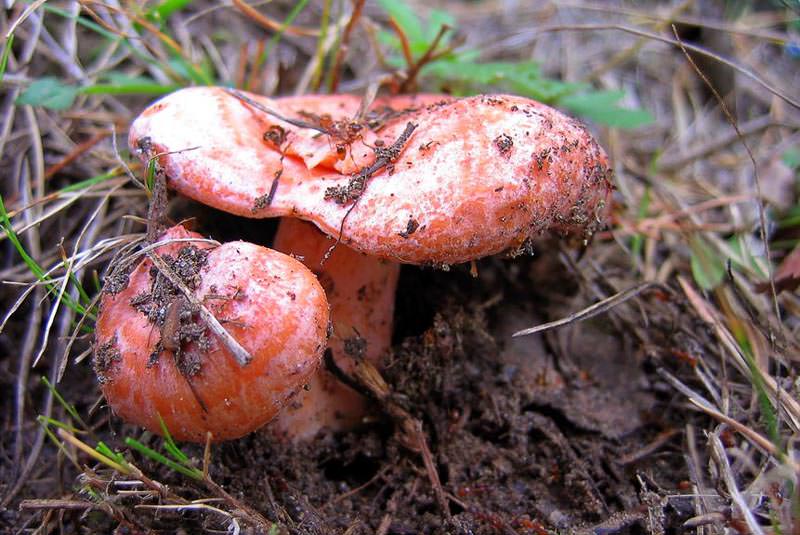 You may be interested in:
You may be interested in: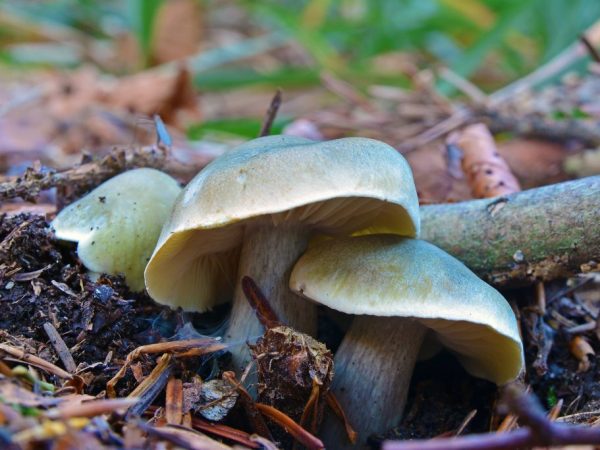
The other two inedible species that can easily be confused with greenfinch are sultry rowan and separate rowan. You can recognize them like this:
- Sultry rowing has a sharp, unpleasant odor and taste, and is also smaller.
- Separate rowovka is characterized by a sharply unpleasant odor and bitter taste, has white or yellowish tinges, located not as thick as in greenfinch,
Useful properties of greenfinch and contraindications
Serugs and greenfins are considered quite nutritious, almost half of their composition is proteins, the same amount contains carbohydrates, which are mainly glycogen. The amount of fat is minimal (in the form of phosphatides, cholesterol and lecithin).
They also include a large number of amino acids (tryptophan, arginine, methionine and others), carotenoids, vitamin B6, trace elements (ferum, potassium, magnesium, calcium, phosphorus, cuprum, iodine, etc.) Energy value: 19 g per 100 g kcal. Mushrooms exhibit antistaphylococcal activity.
Contraindications to their use are as follows:
- children under 12 years old;
- any pathology of the kidneys, liver and gastrointestinal tract;
- bleeding disorder;
- muscle dystrophy and low body mass index;
- any autoimmune diseases;
- pathology of the cardiovascular system;
- diabetes;
- long-term use of anticoagulants;
- pregnancy and lactation.
Salting rules for the winter
Before any method of cooking jaundice, it is necessary to rinse well. To do this, they are kept under a stream of water, while tapping on a hat. Then for 2 hours they are placed in a container with warm salted water (so that the remaining sand crumbles to the bottom). The next step is to gently rinse them several times and clean the hat from the top layer.
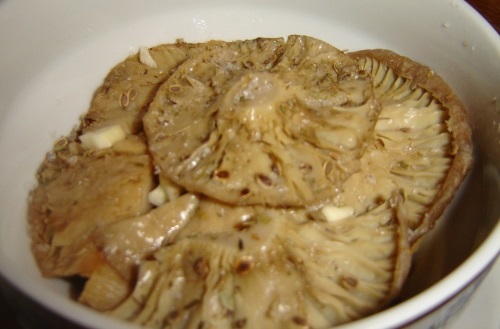
Greenfinchs are never eaten raw. Therefore, after cleaning, cooking is necessary, which is carried out for 20 minutes. Then the mushrooms can be salted for the winter.
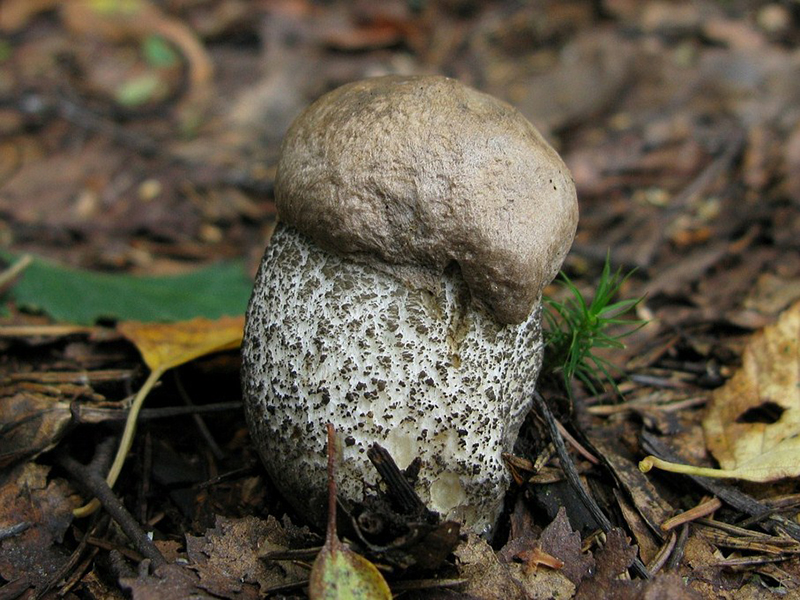 You may be interested in:
You may be interested in:Cold way
In order to pickle greenfishes in a cold way, you need a dry and clean deep container. Pour favorite spices (bay leaf, dill, garlic, horseradish, pepper, etc.) to the bottom of it. Then, mushrooms that are sprinkled with salt are laid on top with one layer of caps with a hat down (at the rate of 40-50 grams per 1 kg of greenfinches).
Then repeat the manipulation with the next layer and so on until the jaundice runs out or the container is full. The next step is to install a press from above so that it will press them well. In this form, the dishes are left for a week until the mushrooms thoroughly empty the juice. As soon as this happens, the container is transferred to a cool place. You can use the product in a few months.
With blanching
Instead of prolonged soaking of the jaundice, you can use the blanching method. To do this, pour salt in a container with water per 1 liter of water 10 grams of salt, bring to a boil and turn off the stove, then put mushrooms in water and keep them from half an hour to an hour.
Pickling
For the preparation of the marinade, you can use any spices (cloves, allspice, black pepper, bay leaves, twigs or foliage of black currants, cherries, horseradish, etc.) after water with greenfinches, spices and salt (for 1 liter of water - 1.5 tablespoon of salt) boil for 30 minutes, 1 tsp is added there. vinegar and after 5 minutes the fire turns off.
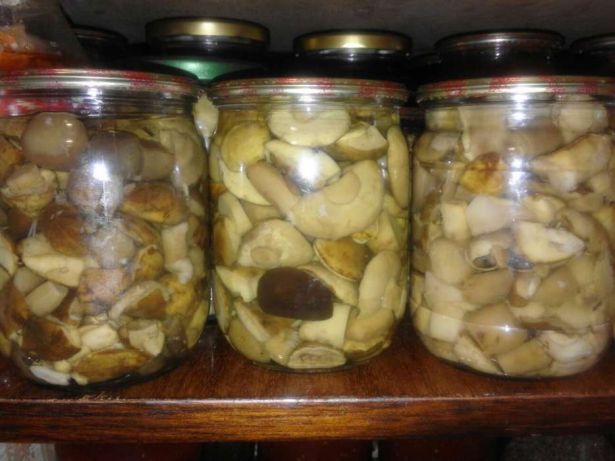
Then the contents of the container are distributed in jars, closed with nylon covers and sent to a cool place (with a temperature of 1-6 ° C). The destruction of harmful bacteria, which, if ingested, can be fatal, depends on how much the mushroom is cooked. Therefore, do not reduce the cooking time.
Answers to common questions about greenfinch
The most common questions about this fungus are the following:
Greenfinch is considered a rather tasty and healthy mushroom, but do not forget that it contains toxins.Therefore, for calm eating, it is necessary to heat it, do not eat in large quantities and remember contraindications.

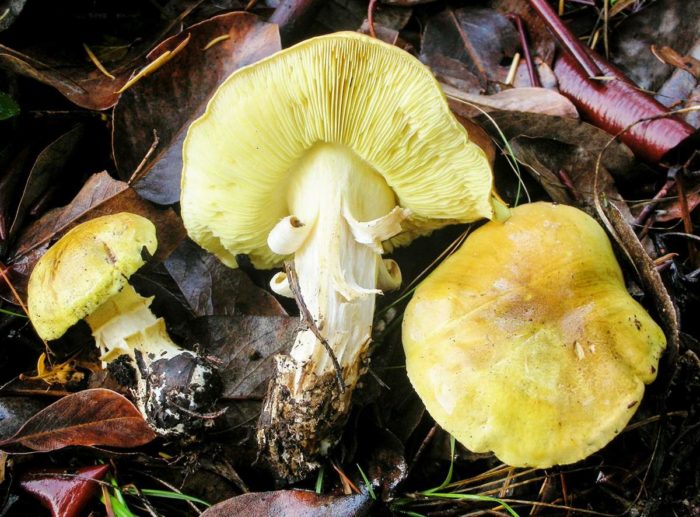
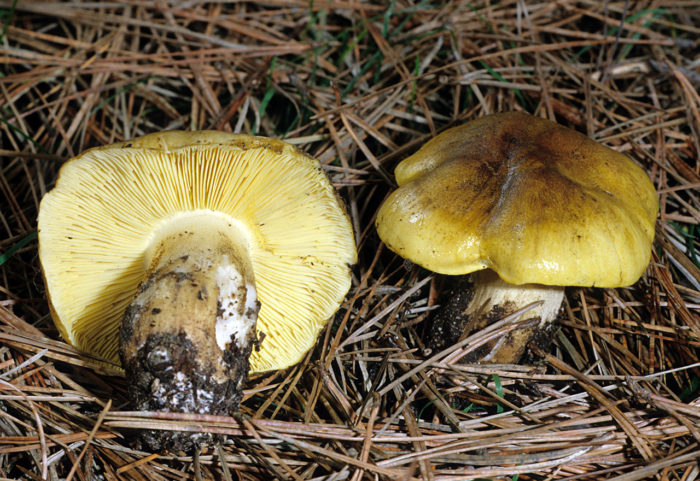
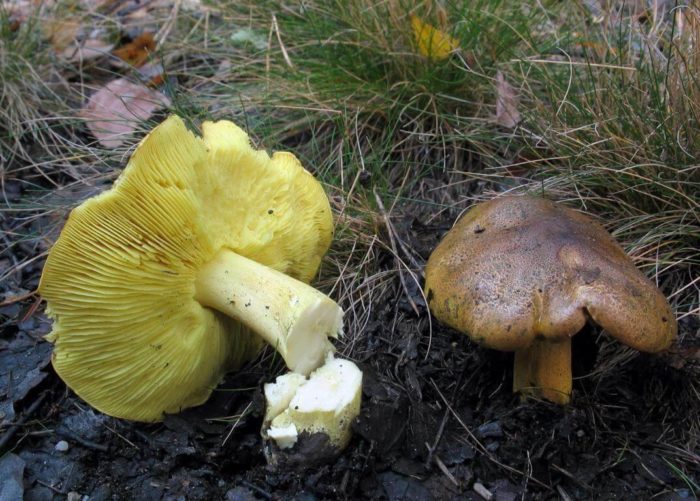
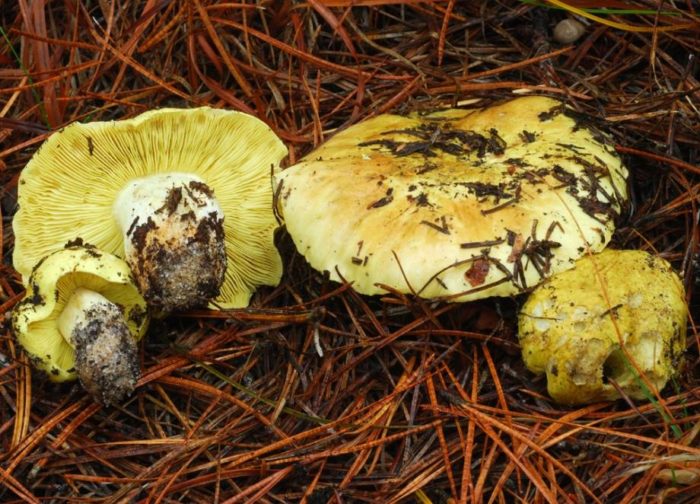
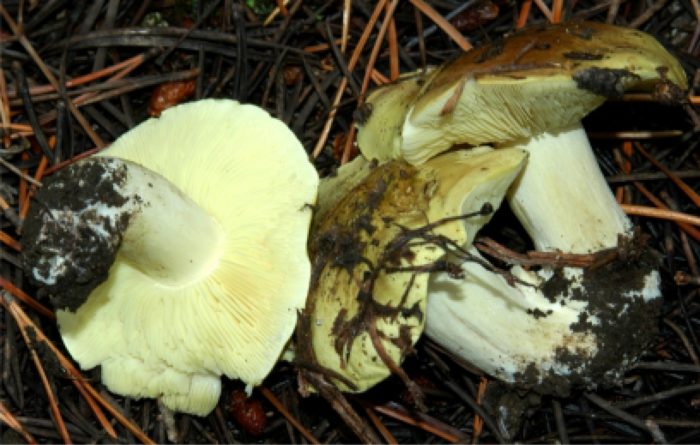
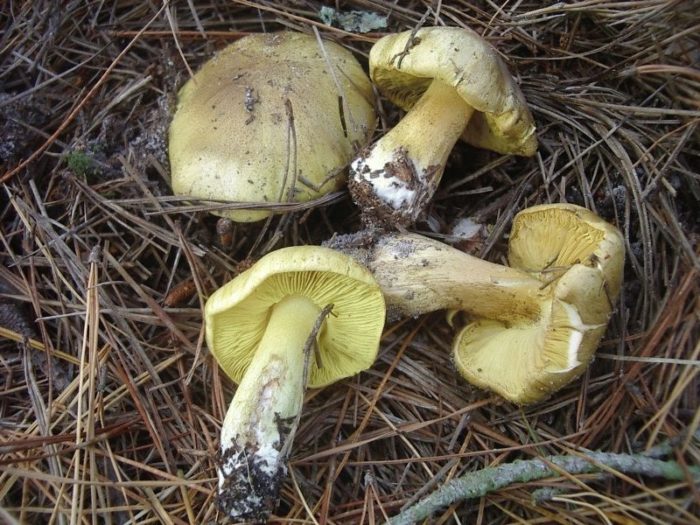
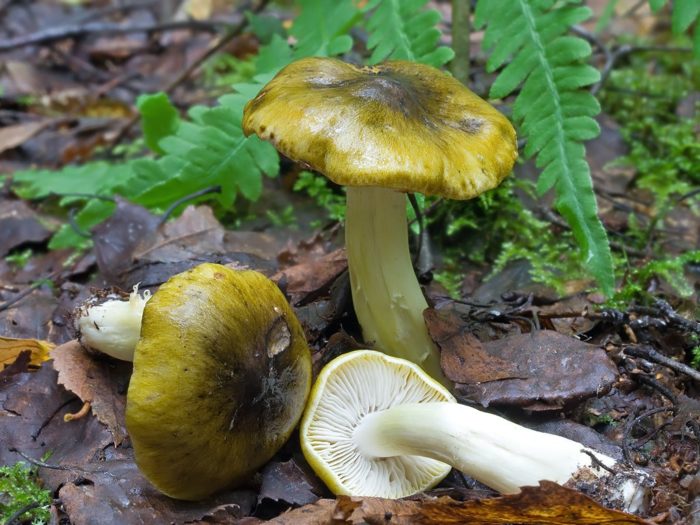
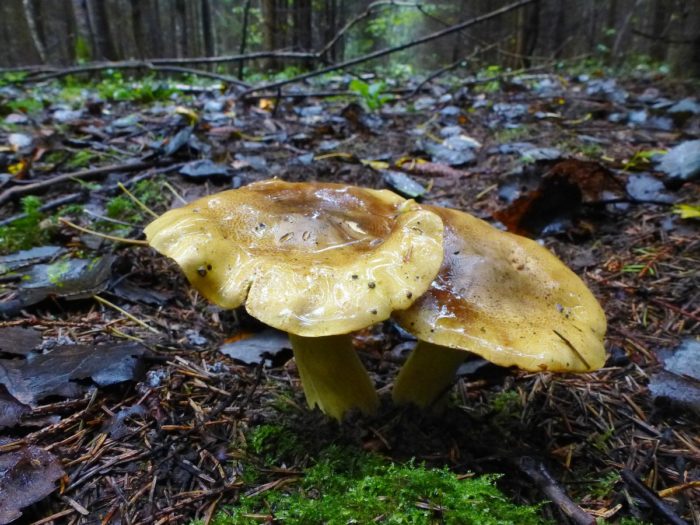
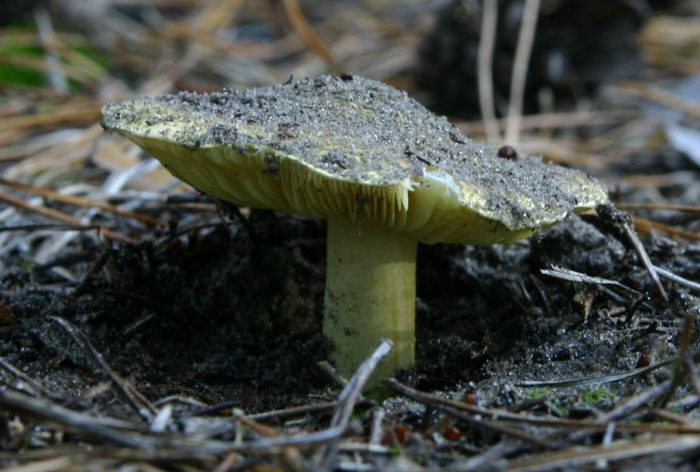



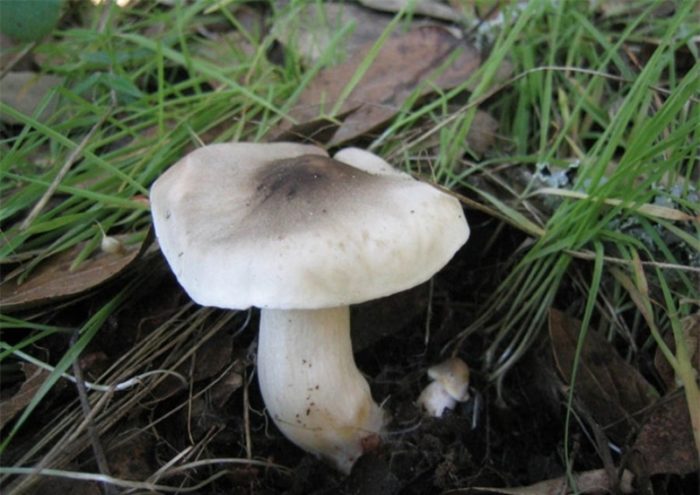
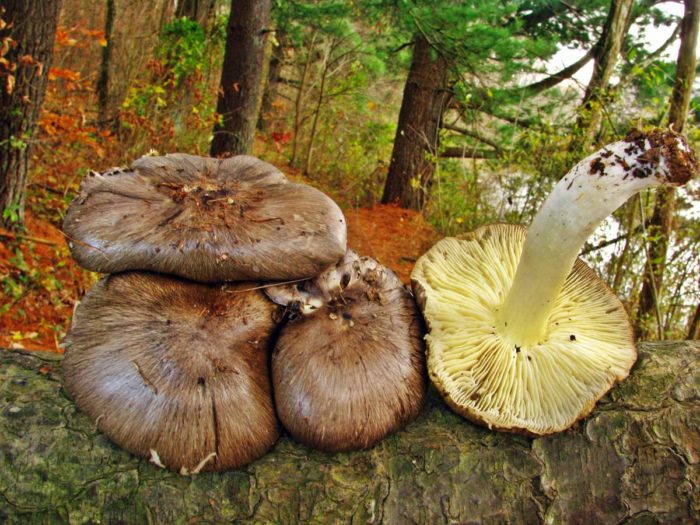
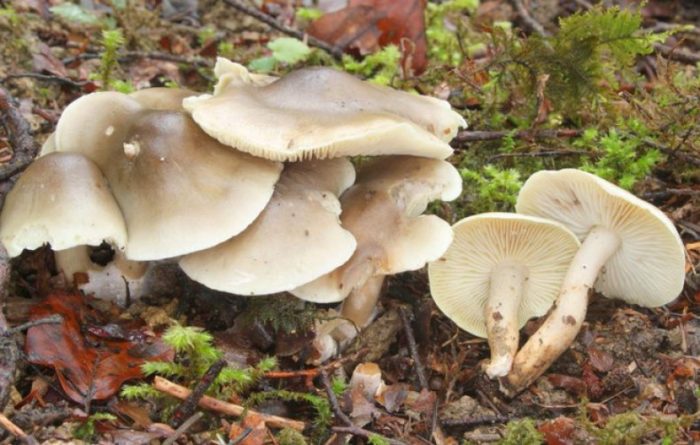
 Care and use of Kombucha at home (+22 photo)
Care and use of Kombucha at home (+22 photo) Edibility of the fungus of the motley umbrella and its description (+19 photo)
Edibility of the fungus of the motley umbrella and its description (+19 photo) Description of edible and inedible oils, their poisonous counterparts (+40 photos)
Description of edible and inedible oils, their poisonous counterparts (+40 photos) Useful properties of milk mushroom and its contraindications (+17 photos)
Useful properties of milk mushroom and its contraindications (+17 photos)